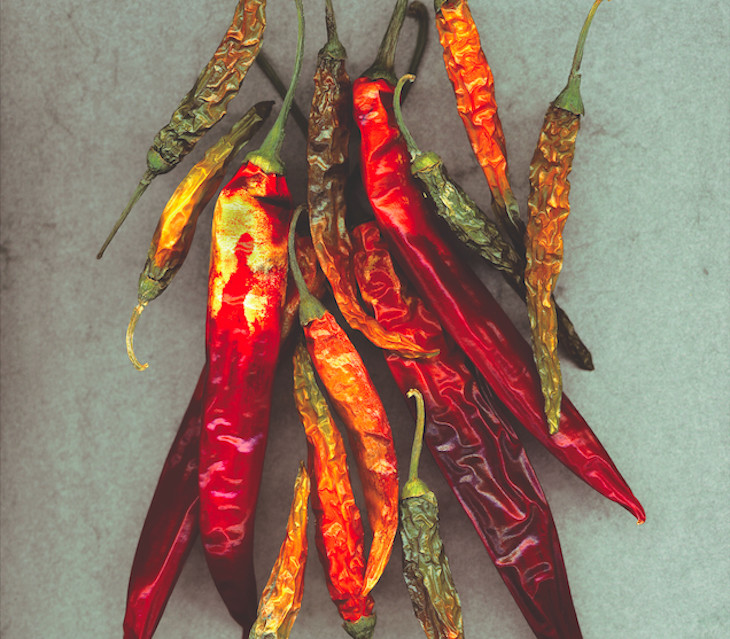
Ingredients guru Pritesh Mody from World of Zing, reveals the complexity behind the ingredients you think you know
Chillies have their origins in Mexico, dating back to 7500BC. However, it was only in 1492, when the directionally challenged Christopher Columbus landed in The Americas (he was actually aiming for Asia), that they became known to the rest of the world. While Columbus can lay claim to discovering chillies, it was Portuguese explorer Vasco da Gama who introduced them to India in 1498, from where they rapidly spread across the world. Having essentially started off as five individual species, a combination of new terroirs and cross-pollination has seen around 3,000 varieties develop – most still found in Central America.
Which brings me nicely on to the most important aspect – flavour. Most people automatically default to ‘spicy’ or ‘hot' when thinking about chillies. Explore a little further and you will find that they can add a wealth of beautiful, vibrant flavours and fragrant aromas – from citrus and tropical fruits to smoky notes – that are particularly relevant to the modern bartender. So I’m sure you can appreciate my frustration when bartenders simply use chillies to add heat to drinks and, worse still, have little understanding of the flavour, resulting in a drink with as much balance as a happy-hour customer on a bicycle.
The essential character of a spice relates to its volatile oil content, the compounds that give it its fragrance and flavour. Conveniently, oil is soluble in alcohol, making spirits ideal for carrying flavour and aroma. Alcohol also releases its aroma and flavours much easier than oil or water-based infusions, again providing the perfect vehicle for vibrant flavour profiles.
It’s also important to understand how the ‘heat’ element of chillies works. Essentially, capsaicin in chillies trigger a reaction in your body that is the same reaction as if you were on fire, hence the burn and the consequent happy vibes as your brain dumps endorphins into your system. The best way to alleviate the pain is through casein, a component in diary products that surrounds and washes away the capsaicin. By contrast, alcohol is far more fun as it simply ‘pick-ups’ the capsaicin, giving temporary relief, then drops it down somewhere else in your mouth.
So where do you start?
I tend to use dried chillies, as they give you access to hundreds of varieties instead of the handful of basic fresh chillies available in the UK. Moreover, infusions with dried spices have a far longer shelf life and they infuse much faster than fresh varieties.
If you follow the adage ‘what grows together, goes together’, then tequila and chillies provide endless opportunities for flavour combinations, although rum is pretty fun too.
The hottest chillies (such as the Habanero or Naga) tend to have a tropical fruit finish that works perfectly with overproof Jamaican rum or a blanco tequila while leaving the palate clean yet wanting more. Try it in a Tommy’s Margarita or Daiquiri for a simple mouth-watering concoction.
Next stop is the Aji Amarillo (also known as Aji Mirasol in dried format), a medium-heat chilli popular in Peruvian cuisine that’s bursting with rich stone fruit flavours. Use it to add depth to a Fish House Punch or a Michelada.
Another favourite is the Pasilla, a mild chilli with the most incredibly rich, raisin-like notes. Infuse it into an anejo tequila or dark rum and cacao and stir-up twists on an Old Fashioned.
Finally, in keeping with the trend for all things smoky, the Chipotle is particularly popular at the moment. Infuse into vodka, whisky or reposado tequila or crush and mix with salt for a smoky rim on a cocktail.

